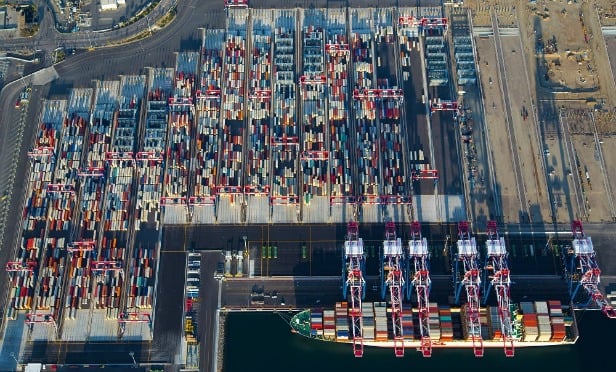 The Inland Empire is leading the nation in large industrial leases. According to a new report from CBRE, the Inland Empire had 21 of the top 100 industrial deals in the US last year, a total of 21 deals and 17.5 million square feet. The closest market was Pennsylvania's I-78 corridor with 13 deals totaling 10 million square feet.
The Inland Empire is leading the nation in large industrial leases. According to a new report from CBRE, the Inland Empire had 21 of the top 100 industrial deals in the US last year, a total of 21 deals and 17.5 million square feet. The closest market was Pennsylvania's I-78 corridor with 13 deals totaling 10 million square feet.
"The ports are the biggest driver of our growth. We did 16 million TEUs last year through the ports, and historically, we have done 14 million TEUs," Daniel De La Paz, EVP at CBRE, tells GlobeSt.com. "The ports of New Jersey and New York, which are the second largest ports in the US, the volume is half of what our ports do. That is largely because of the Asian trade volumes. As a result, a lot of those goods get put in the Inland Empire."
In addition to activity from the ports and ecommerce, industrial users are also consolidating business under one roof, driving the need for larger facilities. "That is something that is different this cycle. In the last cycle, one building would be dedicated to importing and another building would be packaging work and another building would be dedicated to regional distribution," says De La Paz. "These bigger deals are now a combination of multiple business units. Another sign of that trend is the employment base is totally different today than it ever has been."
While the Inland Empire is certainly the top industrial market in the country, it might not have quite the lead that the numbers suggest. "The numbers are a little misleading," says De La Paz. "The Inland Empire, that market really captures all of the growth for Southern California. If you are really trying to compare the Inland Empire, for example, to Pennsylvania's I-78 corridor, you really have to lump in Northern New Jersey, which is another three deals."
The growth in the Inland Empire, however, isn't slowing down. With continued growth at the ports and rising demand from ecommerce, there is plenty of demand to fuel leasing activity. "We are still early in the growth cycle. We didn't see many occupiers want to grow until about 2016 or 2017," says De La Paz. "Ecommerce is a component of that and imports is a component of that."
The biggest challenge for the market will be availability of land. The market is already running out of space following the development boom this cycle. "We are running out of available land for development, and the traditional boundaries of the Inland Empire will have to be stretched," says De La Paz. "Most of the land that has been zoned for industrial development has been built. What you find on a go-forth basis, development is going to have to come from redevelopment or from the high desert where you have available land."
© Touchpoint Markets, All Rights Reserved. Request academic re-use from www.copyright.com. All other uses, submit a request to [email protected]. For more inforrmation visit Asset & Logo Licensing.






